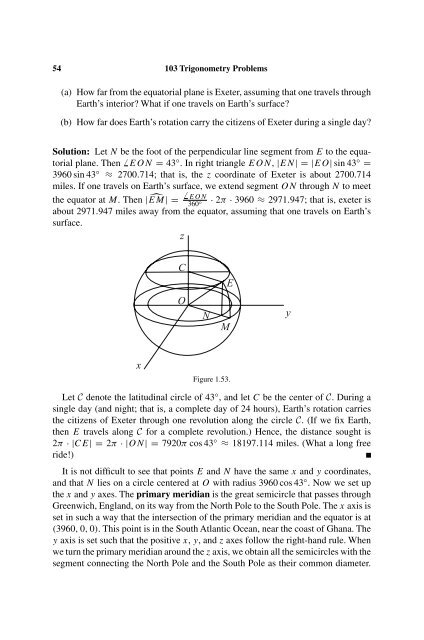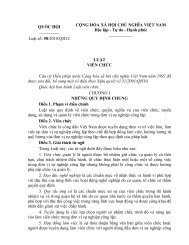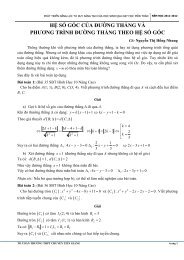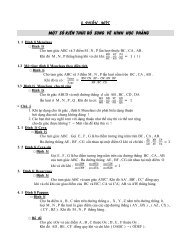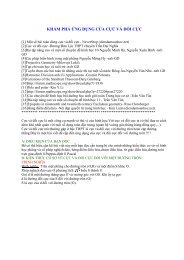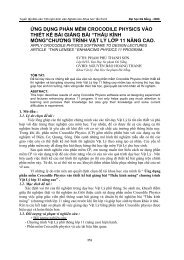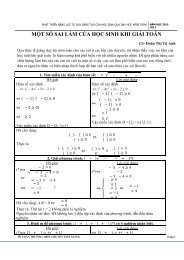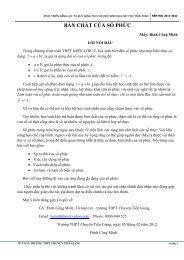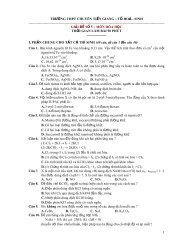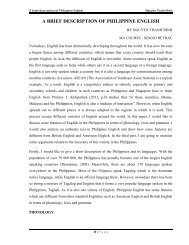103 Trigonometry Problems
103 Trigonometry Problems
103 Trigonometry Problems
You also want an ePaper? Increase the reach of your titles
YUMPU automatically turns print PDFs into web optimized ePapers that Google loves.
54 <strong>103</strong> <strong>Trigonometry</strong> <strong>Problems</strong><br />
(a) How far from the equatorial plane is Exeter, assuming that one travels through<br />
Earth’s interior? What if one travels on Earth’s surface?<br />
(b) How far does Earth’s rotation carry the citizens of Exeter during a single day?<br />
Solution: Let N be the foot of the perpendicular line segment from E to the equatorial<br />
plane. Then ̸ EON = 43 ◦ . In right triangle EON, |EN| =|EO| sin 43 ◦ =<br />
3960 sin 43 ◦ ≈ 2700.714; that is, the z coordinate of Exeter is about 2700.714<br />
miles. If one travels on Earth’s surface, we extend segment ON through N to meet<br />
the equator at M. Then |ÊM| = ̸ EON<br />
360 ◦ · 2π · 3960 ≈ 2971.947; that is, exeter is<br />
about 2971.947 miles away from the equator, assuming that one travels on Earth’s<br />
surface.<br />
z<br />
C<br />
E<br />
O<br />
N<br />
M<br />
y<br />
x<br />
Figure 1.53.<br />
Let C denote the latitudinal circle of 43 ◦ , and let C be the center of C. During a<br />
single day (and night; that is, a complete day of 24 hours), Earth’s rotation carries<br />
the citizens of Exeter through one revolution along the circle C. (If we fix Earth,<br />
then E travels along C for a complete revolution.) Hence, the distance sought is<br />
2π ·|CE| =2π ·|ON| =7920π cos 43 ◦ ≈ 18197.114 miles. (What a long free<br />
ride!)<br />
It is not difficult to see that points E and N have the same x and y coordinates,<br />
and that N lies on a circle centered at O with radius 3960 cos 43 ◦ . Now we set up<br />
the x and y axes. The primary meridian is the great semicircle that passes through<br />
Greenwich, England, on its way from the North Pole to the South Pole. The x axis is<br />
set in such a way that the intersection of the primary meridian and the equator is at<br />
(3960, 0, 0). This point is in the South Atlantic Ocean, near the coast of Ghana. The<br />
y axis is set such that the positive x, y, and z axes follow the right-hand rule. When<br />
we turn the primary meridian around the z axis, we obtain all the semicircles with the<br />
segment connecting the North Pole and the South Pole as their common diameter.


